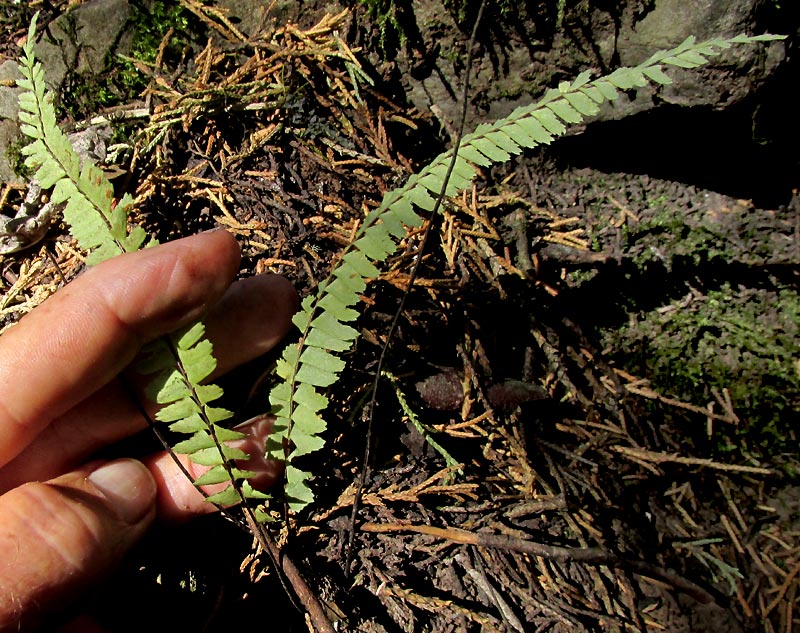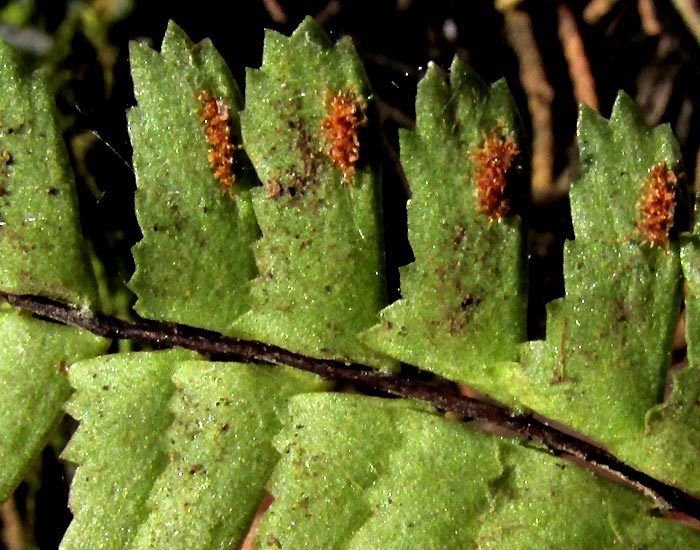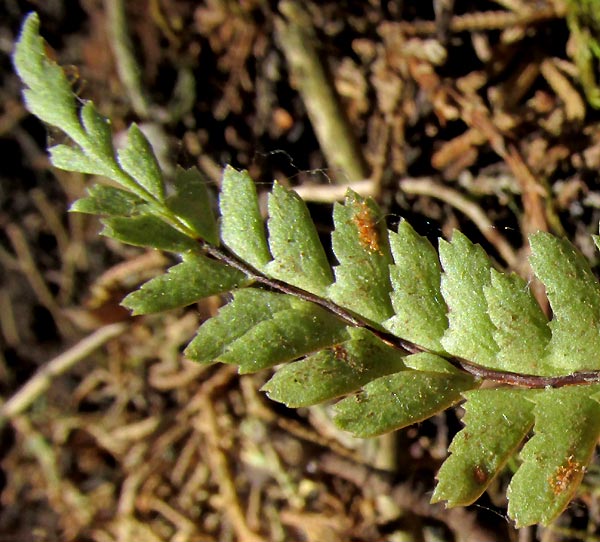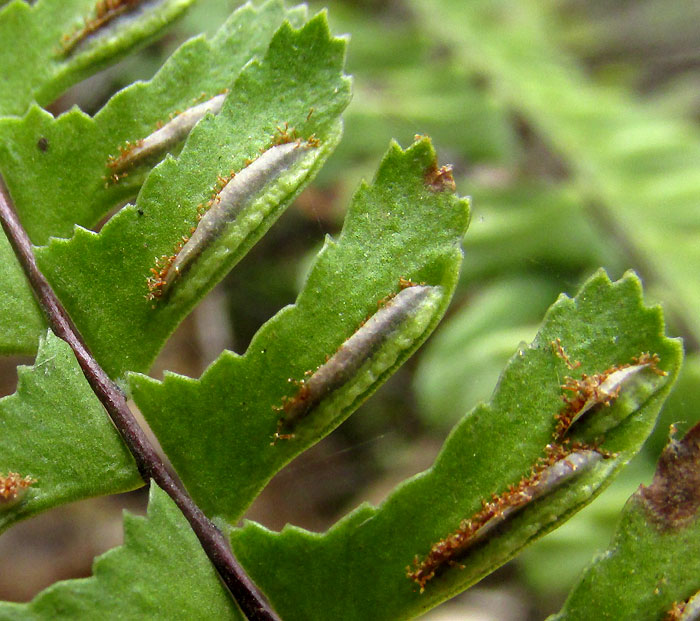Excerpts from Jim Conrad's
Naturalist Newsletter
entry from field notes dated April 14, 2022, taken in disturbed/reforesting borderline cloudforest within 1km of Valle de los Fantasmas, elevation ±2,320m (7600 ft), with limestone bedrock; about 40kms (24 miles), straight-line, ESE of San Luis Potosí, San Luis Potosí state, MÉXICO, (N22.06°, W100.62°)
SINGLE-SORUS SPLEENWORT

Looking for a spot to camp overnight, I climbed toward a densely forested patch on the much-disrupted landscape. The patch turned out to be Mexican Cedars, CUPRESSUS LUSITANICA, closely planted in ranks and files, maybe 25 years ago, on a steep slope. It looked like the whole mountain had been completely deforested, then Mexican Cedars were planted to bring the resulting, inevitable erosion under control. Now the plantation was shadowy and cool, and the original forest's status as a borderline cloudforest was attested by many forms of lichen and moss clustered on the cedars' dead lower limbs. Also, where limestone rock emerged from the thin soil, often the fern shown above was to be found.
At a glance it was clear what group of ferns this was, because of the general frond form and, especially, the fronds' slender, dark, brittle midriba, or rachises. It's a spleenwort, genus Asplenium, very similar to the Ebony Spleenwort so common, sometimes abundant, in many eastern North American forests. However, up close, it was clearly a different spleenwort species:

This spleenwort's leaflets, or pinnae, are smaller and much more jaggedly toothed than the Ebony's. However, the most striking difference is that the clusters, or sori, of brown, spore-producing sporangia number mostly just one per pinna, though sometimes two or three appear. Other spleenwort species normally produce more. Ebony Spleenwort pinnae normally bear up to 24, a dozen on each side of the pinna's midvein.
When identifying spleenworts, often an important field mark to notice is to what extent the frond's rachis and petiole are blackened. Below, you see that on this species the dark color ends just before reaching the frond's tip:

All these features bring us to what in English often is called the Single-Sorus Spleenwort. It's ASPLENIUM MONANTHES, occurring spottily in North America, more commonly throughout tropical America, including the Caribbean, and Africa, as well as Hawaii.
An online 2016 publication by Hit Kishore Goswami and others in India, entitled "Pteridophytes: evolutionary boon as medicinal plants," reports for our Single-Sorus Spleenwort: "leaves smoked for head cold, diaphoretic." Diaphoretics induce sweating.
entry from field notes dated June 28, 2022, taken in an oak forest on the slopes of Cerro de la Cruz, elevation ~2750m (~9000 ft), rising on the south side of the community of El Pinar, Amealco de Bonfil, Querétaro, MÉXICO, (~N20.17°, ~W100.17°)
SINGLE-SORUS FERN WITH INDUSIA

On Cerro de la Cruz the above Single-sorus Fern bears less mature sori, despite being later in the season than the above fern in San Luis Potosí. The elevation here is considerably higher and many others plants similarly are less advanced into the season.
Also notice the two sori on the pinna at the picture's lower right.